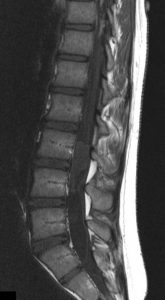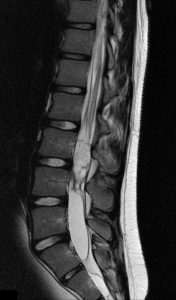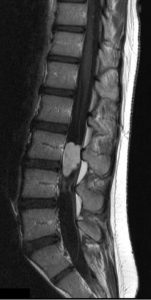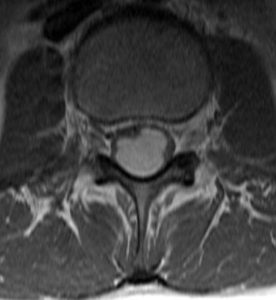About Us
14 year-old with low back pain radiating down both legs

T1 sagittal noncontrast

T2 sagittal

T1 sagittal post Gad

T1 axial post Gad
Findings:
Lobulated intradural mass at the L3 level which displaces the nerve roots circumferentially, but predominantly laterally. Relative to the spinal cord, it is isointense on T1, and hyperintense on T2. It avidly enhances in a near homogeneous fashion with gadolinium
DDX:
Intradural spinal mass: ependymoma or schwanomma
Diagnosis:
Myxopapillary ependymoma.
Discussion:
Spinal ependymomas are more rare than intracranial types. Most are of the myxopapillary type related to conus or filum terminal and present in patients aged 20-40 years. Intramedullary ependymomas have been associated with neurofibromatosis type
Submitted by Anthony Giauque, MD, UW Neuroradiology Fellow